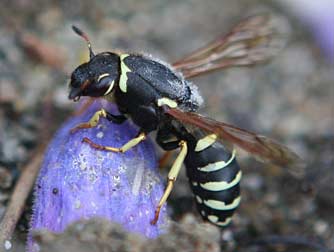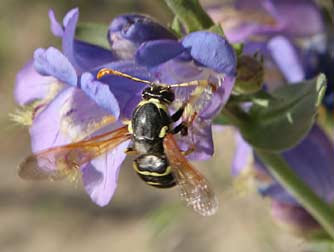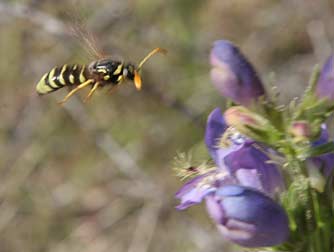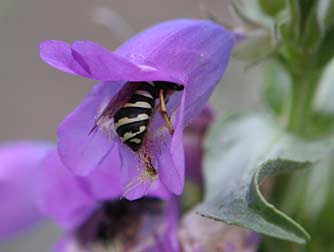 Pseudomasaris vespoides or pollen
wasps look like vespid wasps such as yellowjackets but live much
differently. While yellowjackets have nests of thousands and scavenge
meat and sweets to feed their offspring -- like picnic food
-- pollen wasps lead solitary lives, gathering pollen and nectar from
flowers to feed their offspring. Life and behavior aside, the clubbed antennae
on pollen wasps (or masarid wasps) and many other details distinguish them from yellowjackets. Pseudomasaris vespoides or pollen
wasps look like vespid wasps such as yellowjackets but live much
differently. While yellowjackets have nests of thousands and scavenge
meat and sweets to feed their offspring -- like picnic food
-- pollen wasps lead solitary lives, gathering pollen and nectar from
flowers to feed their offspring. Life and behavior aside, the clubbed antennae
on pollen wasps (or masarid wasps) and many other details distinguish them from yellowjackets.
Masarid wasps are also sensitive, their existence tied to very
specific plants to gather pollen to provision their larvae. For Pseudomasaris vespoides, that plant is the penstemon,
including several rare species that benefit from its pollination, increased seed production and improved genetic diversity.

Male Pseudomasaris vespoides pollen wasp
with long clubbed antennae and darker coloration in Washington

Male Pseudomasaris vespoides pollen wasp
visiting penstemon flowers

Pseudomasaris vespoides pollen wasp
taking shelter on a rainy day in Penstemon eriantherus whitedii
» Other Eastern Washington
wasps
|

